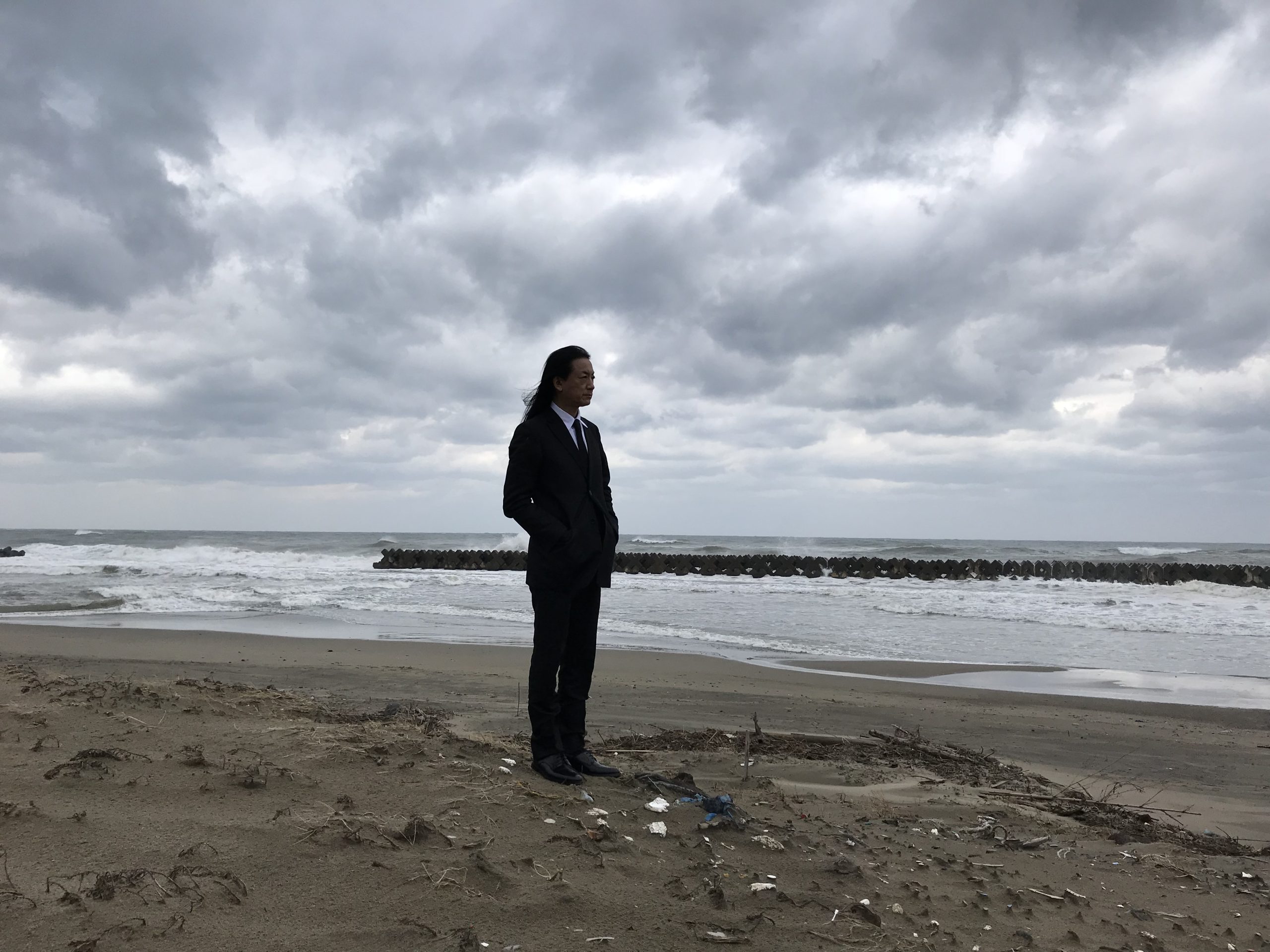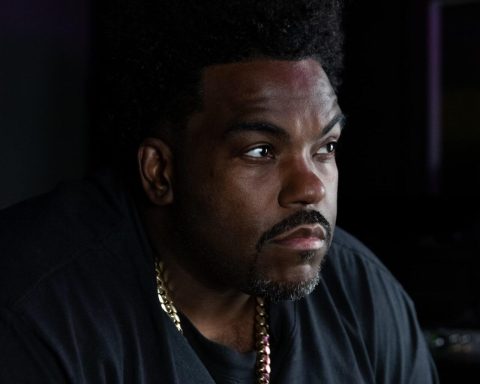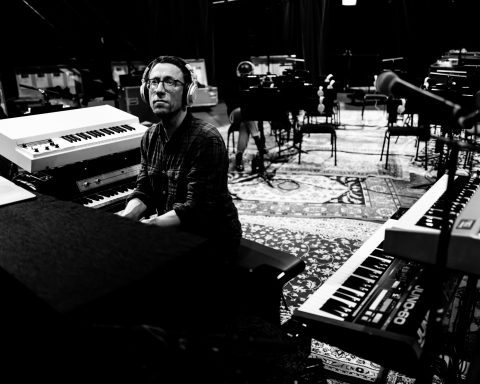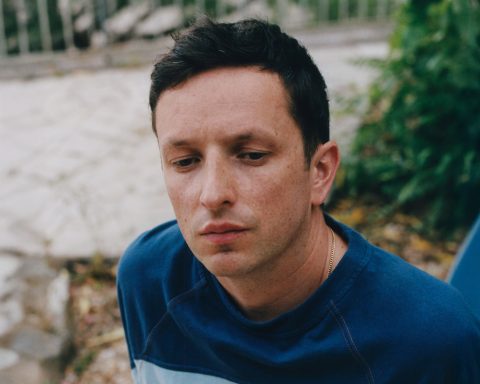Widely regarded as the most important artist in noise music, since 1979, Masami Akita’s Merzbow project has stood at the center of the genre, defining its possibilities. Both an icon and an anomaly, while critics might describe Akita’s output as anti-music, its sheer scale defies classification. With over 500 releases, his influence extends across avant-garde, industrial, and extreme music. However, Merzbow is not only about volume but vision—a boiling ocean of merciless textures and sound that never stops unfolding. Once attuned to his unique frequencies, the dense walls of sound often reveal an unexpected beauty and clarity within the chaos. It’s the paradox that continues to define Akita’s legacy, and one that’s carried forward on the latest four-part Merzbow LP, Sedonis.
Noise Concepts
Did the concept of noise music exist when you started making music in the late 1970s?
I don’t think the term “noise music” was really around in the late ’70s. Back then, people usually called it industrial music, no wave, harsh electronics, or post-industrial. Of course, noise itself had already been there long before in Western contemporary music, electro-acoustic, rock, and even jazz. In those scenes, noisy stuff was more likely to be talked about as experimental, avant-garde, or free improvisation, but the idea of noise music as its own genre was something that artists—myself included—really brought into being in the early ’80s. For me, it started with the progressive rock and krautrock of the ’70s, moving through punk, new wave, and industrial. That’s when I began creating noise music.
Was there a specific turning point that led you towards noise as opposed to making traditional rock or commercial music?
My early influences came from the rock and progressive rock of the ’60s and ’70s, electro-acoustic music, artists like Sun Ra, and labels such as ESP-Disk, Incus, and FMP. When it came to noise-related works, I was especially inspired by Pierre Schaeffer and Pierre Henry’s Symphonie Pour un Homme Seul, Iannis Xenakis’s Persepolis and Electro-Acoustic Music, Walter Marchetti’s Homemade Electric Music, and Stockhausen’s Hymnen. I was also influenced by Dadaism and surrealism.
The idea that first pushed me toward making noise music was the question: “Is surrealism in music possible?” When people talk about surrealist music, they usually bring up things like Schoenberg’s Pierrot Lunaire or Boulez’s Le Marteau Sans Maître, but I came from a rock background and punk was already happening at the time.
To me, contemporary classical music felt too polished or bourgeois to really embody surrealism. What I wanted was something lo-fi, cheap, and punk—music made with the techniques of musique concrète. That was when I launched Merzbow Lowest Music & Arts as a cassette-based project, but it wasn’t just about music. It was tied into mailing out copy art or even bits of junk through the post.
“What I wanted was something lo-fi, cheap, and punk—music made with musique concrète techniques.”
External Influences
Were you exposed to the explosion of commercial European synthesiser music in the late ’70s through artists like Kraftwerk, Gary Numan, or The Human League?
I have at least one record by each of those artists, but I wasn’t particularly interested in them. I liked very early Kraftwerk in the same way that I liked Kluster, Cluster, or Tangerine Dream. At the time, the synth music I was listening to was more on the industrial side: Throbbing Gristle, Cabaret Voltaire, The Normal, Rental & Leer, and SPK. I was also into The Residents. In the early ’80s, I was listening to a lot of West Coast stuff like Minimal Man, Nervous Gender, Factrix, LAFMS, and the Ralph Records bands.
Can you remember your very first noise recording?
My very first noise recording happened when a friend of mine—a sculptor and poet named “A”—was preparing what I think was his graduation project. He was going to recite Antonin Artaud’s poem The Nerve Scales, and I created the background sound for his reading. That piece is now released as Metal Acoustic Music. I still remember when the tape was played in the classroom, and one of the students said, “That’s disgusting.”
Was there a specific subject matter that acted as a concept for the music you created? And how have those themes changed over the decades?
In the late ’70s, there was an ongoing side to my work that grew out of improvisations with Kiyoshi Mizutani. At first, it took the form of avant-garde rock, but gradually it shifted into improvisation influenced by free jazz and free music. Merzbow Lowest Music & Arts was something separate and started as a solo activity with the concept of “music for cassette tapes.”
The approach was basically collage-like: I recorded everyday concrete sounds, feedback, and other noise. Alongside live performances and studio sessions with Mizutani, I fragmented and mixed these different sources into finished works. All through the ’80s, I continued doing occasional studio sessions with Mizutani and sometimes used those recordings as material for my pieces.
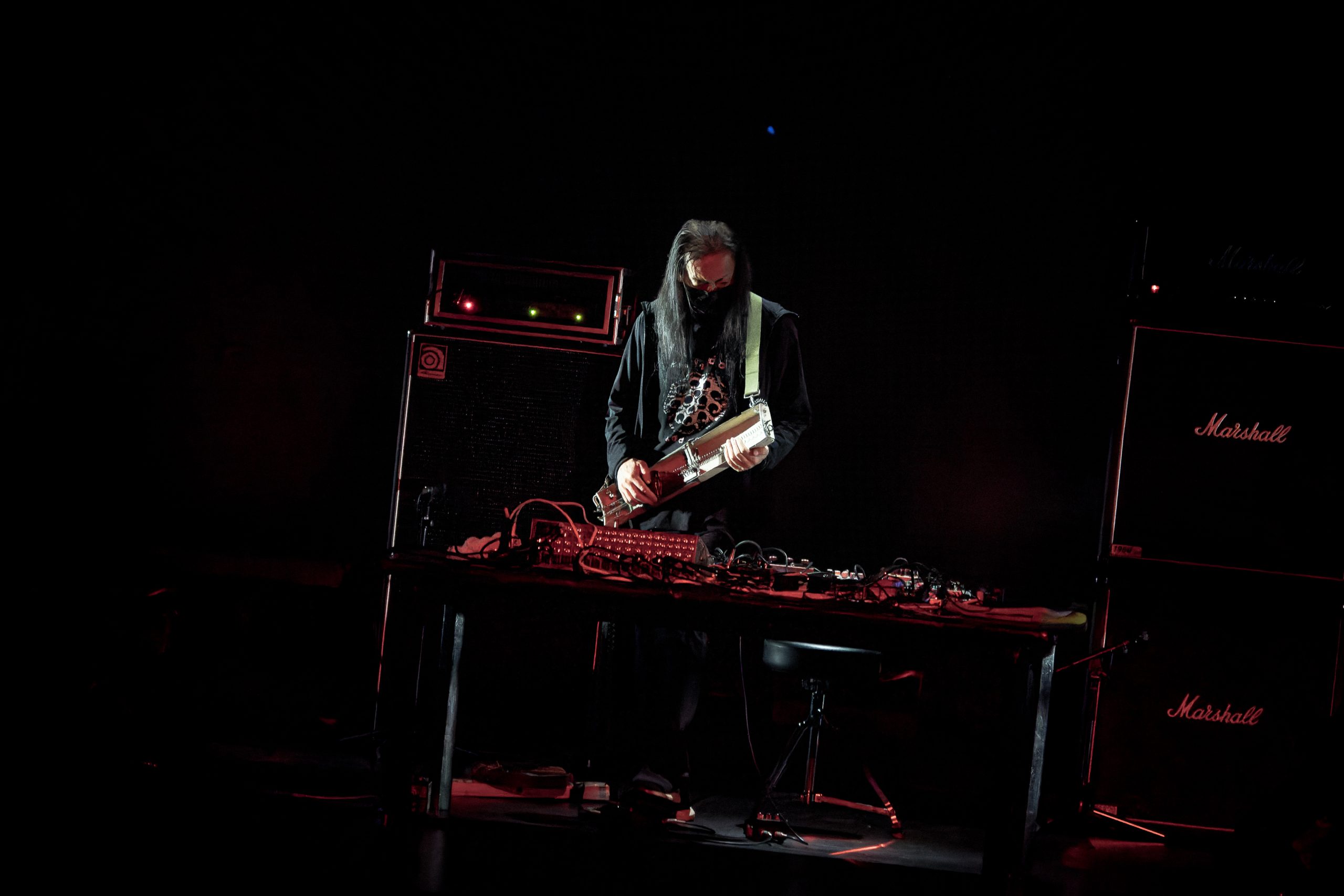
“When the tape was played in the classroom, one of the students said, “That’s disgusting.”
How did things develop from there?
I continued working with collages, as well as tape loops, audio mixer feedback, metal-string instruments, and sampling or scratching from records and CDs. The debut album, Material Action 2, included material Mizutani had given me, like the sounds of typesetting machines and synthesizers, which I then mixed in the studio.
For Ecobondage and Storage, I used a self-built instrument comprising a tin clothing case that I’d picked up off the street, strung with piano wire to create metallic string noises combined with mixer feedback and tape. Starting with Cloud Cock OO Grand in 1999, I began connecting different sound sources more seamlessly, adding distortion and accelerating them. With the CD format, I could also raise the volume and sound pressure further than before.
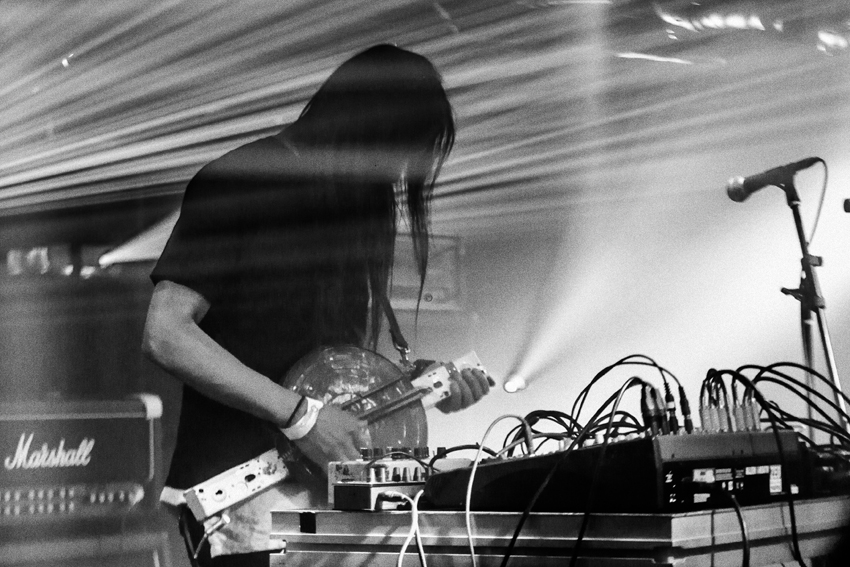
Material Action
Self-built instruments tie into a concept that you call “material action.” Can you explain that a little further?
The term “material action” was something I intuitively borrowed from the Viennese performer Otto Muehl in the 1960s, though I used it in a different sense. For me, it meant that music already exists in the world and only needs to be collected. You could find music anywhere—in the kitchen, the living room, on a desk, or in the everyday environment. And the way to collect it was simply to record it on cassette with a microphone.
I used to rub the microphone against different objects, and of course, it made these destructive sounds, but I actually found them pleasing, kind of like how scratch or glitch sounds can feel satisfying. I was always recording sounds on a Sony mono cassette recorder. The pause button was really responsive, which made it perfect for doing abrupt cuts. That’s how I made my early collages.
“I used to rub the microphone against different objects, and of course, it made these destructive sounds, but I actually found them pleasing.”
To what extent did the arrival of synthesizers allow you to modify your approach to noise music?
When I started making music, synthesizers were already around, but I treated them like any other instrument and wasn’t especially interested. In fact, I tried not to use them after I saw Lou Reed’s Metal Machine Music with its “No Synthesizer” credit. Instead, I made feedback loops with audio mixers to create synth-like noise in other ways.
In 1994, I bought an EMS Synthi A in Shibuya, almost on impulse. It gave me the new textures I’d been looking for at the time. I’d always been curious about EMS: its distinctive design, metallic sound, and the fact that bands like Pink Floyd, Hawkwind, King Crimson, and Roxy Music had all used it. Later, in Melbourne, I picked up a VCS3. I still use both and take good care of them.
In 1995, I got a Novation Bass Station Rack but stopped using it pretty quickly. The BOSS SE-70 digital effects processor, on the other hand, was all over my work in the late ’90s. It had 35 different effects, each with its own EQ settings, so that I could push the distortion to extremes; it was really useful!
"I started using it in the late '90s but still rely on the AD-50 now."
You also used a Roland Double Beat AD-50 pedal. What attracted you to this obscure combination fuzz-wah?
I started using it in the late ’90s but still rely on the AD-50 now. The basic Merzbow setup is built around homemade instruments with contact mics and piezo buzzers attached, amplified, and processed with various effects. The first step in that chain is the AD-50, which I run into a ProCo Turbo Rat for the initial destructive amplification. From there, the signal branches out through multiple effects before reaching the output.
I currently own four AD-50s. There seems to be a few variations depending on the year of manufacture, but I’ve identified two types: one with the input on the right and output on the left, with a metal crank-style pedal, and another with the input and output reversed and a plastic gear-style pedal. The distortion character varies quite a bit between units.
Since I’m not plugging in a normal guitar, compatibility with other effect pedals is often limited, but the AD-50 works surprisingly well in my setup. Before using the AD-50, I used the Ibanez WF-10, which sounded good but the plastic body was weak and broke easily. The AD-50, on the other hand, is a solid block of iron, so it’s much more dependable. Of course, the internals have broken several times, but I’ve always had them repaired and kept using them.
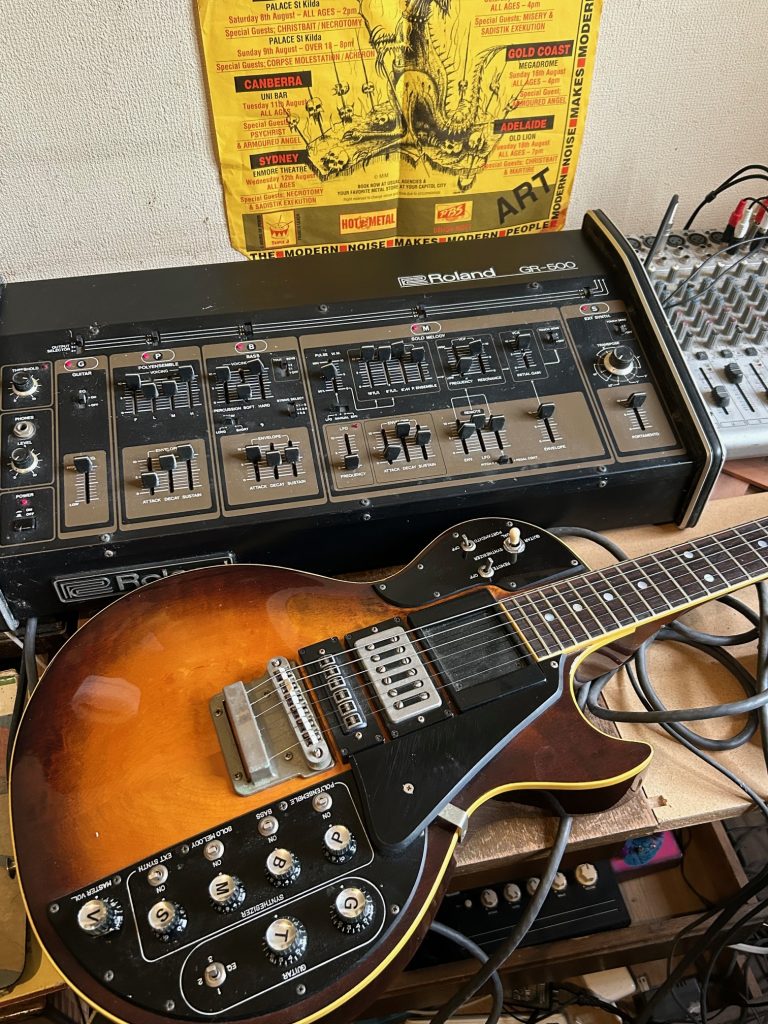
GR-500 Guitar Synth
One of the first electronic instruments you used was the Roland GR-500 guitar synth.
I bought it in the late ’90s after getting a call one day from Iwasaki from Monde Bruits in Osaka, telling me there was a strange vintage guitar synth at a junk shop and asking if I wanted to buy it. I didn’t know the details, but I trusted him and bought it for 50,000 yen. When it first came out in 1977, it sold for around 330,000 yen, and a university graduate’s starting salary at the time was only about 100,000 yen, so it was a pretty expensive instrument, but by the time I got it, it was a bargain.
Can you describe the instrument and how you’ve used it in your work?
The GR-500 is the analog synth part, used with the GS-500 guitar-shaped controller, and mine also came with a foot controller. It could function as a guitar on its own, but the controller also had a bass section where each of the six strings could be assigned individually, for example, making the 5th and 6th strings bass and the others guitar.

You could also apply percussion, attack, decay, and envelope generators, which let it produce a funky auto-wah bass. There were also poly ensemble and solo melody sections for the main synth sounds. The tone itself was fat and heavy, but since I was running it through heavy distortion, I couldn’t really make use of it as a guitar synth.
More recently, I saw Steve Vai on YouTube talking about the guitar synth Robert Fripp used—probably the GR-300—and that reminded me of the GR-500. So, I pulled it out of storage and have been trying it in the studio to get more guitar-synth-like tones out of it.
Is improvisation the secret to your productivity?
If you mean, am I prolific because of improvisation, then the answer is definitely no. My music isn’t improvisation – the way I work is by putting pieces together from recordings of performances, so mixing and editing end up being the most important parts. On stage, I pretty much decide everything beforehand, from the structure to which samples to use and in what order, so there’s hardly any improvisation. If it’s a 50-minute set, I plan everything to fill that time, and if I run out of material, then I’ll improvise.
Sedonis
How has your latest LP, Sedonis, evolved the Merzbow sound or your approach to noise music?
Sedonis was made with a computer, modular electronics, and homemade instruments: the same setup I used for the Nine Studies of Ephemeral Resonance series. Since that series runs across nine records, the way I put the sound together changed a lot from the first to the last. In the beginning, I focused more on metallic percussion. Later, I started using a lot of piano samples, and while the early pieces were densely layered, towards the end, I began leaving some parts more open, without overlapping layers.
What’s your opinion on the use of artificial intelligence within music?
I haven’t used AI in music yet, but I’ve been using AI to generate images and videos for album covers, live slide shows, and avatars for social media promotion. I don’t know why, but ever since I started using AI for image generation, I’ve been getting a lot of criticism online.
“Sedonis was made with computer, modular electronics, and homemade instruments.”
Noise fans can actually be conservative when it comes to new kinds of art, with most of the criticism boiling down to the idea that AI is evil because it’s destroying the environment. It’s true that running AI on a large scale takes a huge amount of electricity and water, so the environmental impact is hard to ignore. Still, people in the industry are working on ways to run AI with less power and to transition to renewables.
AI is also being used to address environmental issues, for example, optimizing power grids, predicting climate change, and improving recycling, so you can’t say AI is nothing but destructive to the environment. Instead of attacking individuals on social media for using AI, I think the criticism really belongs with the industry itself.
